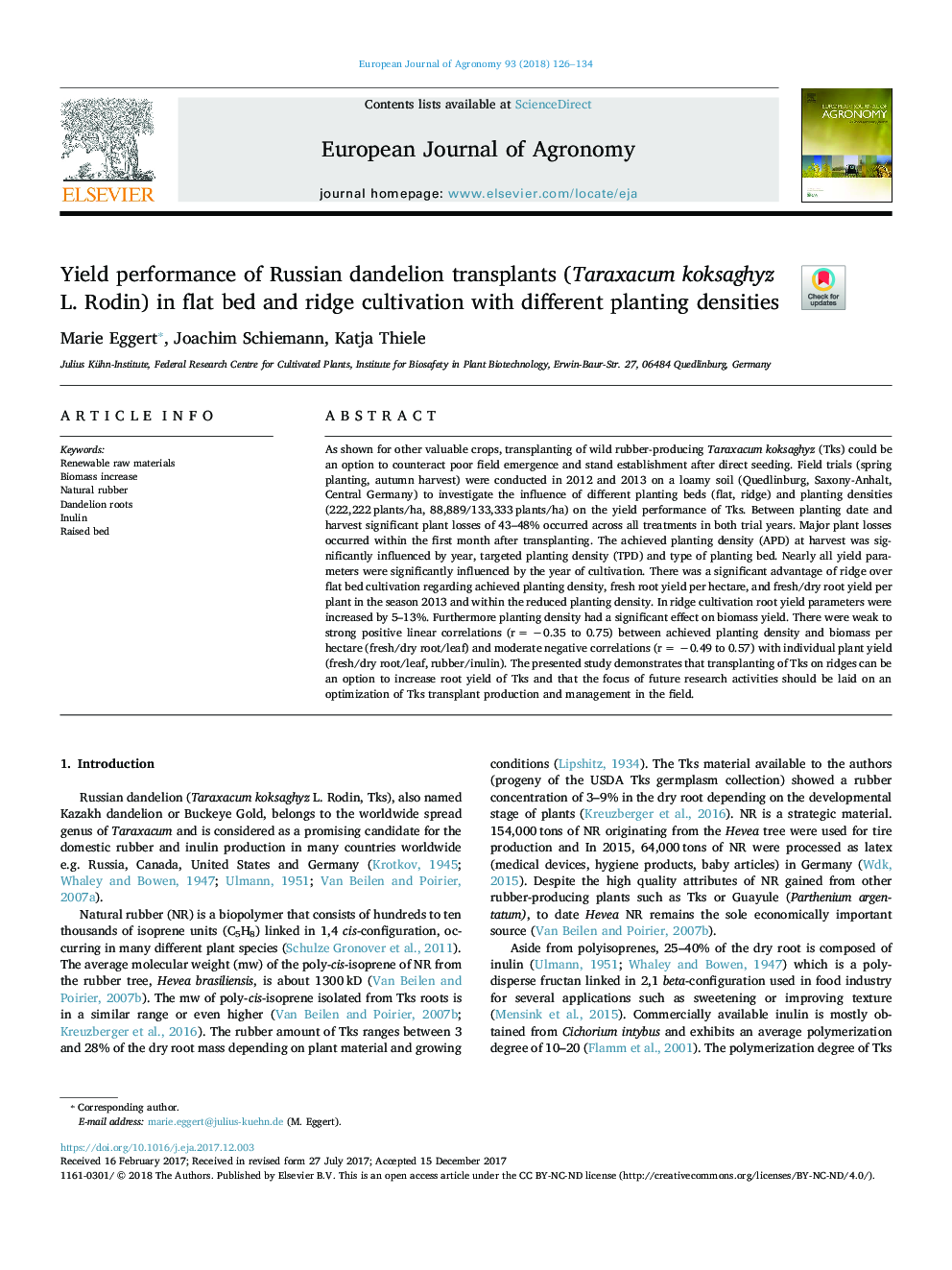| Article ID | Journal | Published Year | Pages | File Type |
|---|---|---|---|---|
| 8879001 | European Journal of Agronomy | 2018 | 9 Pages |
Abstract
As shown for other valuable crops, transplanting of wild rubber-producing Taraxacum koksaghyz (Tks) could be an option to counteract poor field emergence and stand establishment after direct seeding. Field trials (spring planting, autumn harvest) were conducted in 2012 and 2013 on a loamy soil (Quedlinburg, Saxony-Anhalt, Central Germany) to investigate the influence of different planting beds (flat, ridge) and planting densities (222,222â¯plants/ha, 88,889/133,333â¯plants/ha) on the yield performance of Tks. Between planting date and harvest significant plant losses of 43-48% occurred across all treatments in both trial years. Major plant losses occurred within the first month after transplanting. The achieved planting density (APD) at harvest was significantly influenced by year, targeted planting density (TPD) and type of planting bed. Nearly all yield parameters were significantly influenced by the year of cultivation. There was a significant advantage of ridge over flat bed cultivation regarding achieved planting density, fresh root yield per hectare, and fresh/dry root yield per plant in the season 2013 and within the reduced planting density. In ridge cultivation root yield parameters were increased by 5-13%. Furthermore planting density had a significant effect on biomass yield. There were weak to strong positive linear correlations (râ¯=â¯â0.35 to 0.75) between achieved planting density and biomass per hectare (fresh/dry root/leaf) and moderate negative correlations (râ¯=â¯â0.49 to 0.57) with individual plant yield (fresh/dry root/leaf, rubber/inulin). The presented study demonstrates that transplanting of Tks on ridges can be an option to increase root yield of Tks and that the focus of future research activities should be laid on an optimization of Tks transplant production and management in the field.
Related Topics
Life Sciences
Agricultural and Biological Sciences
Agronomy and Crop Science
Authors
Marie Eggert, Joachim Schiemann, Katja Thiele,
